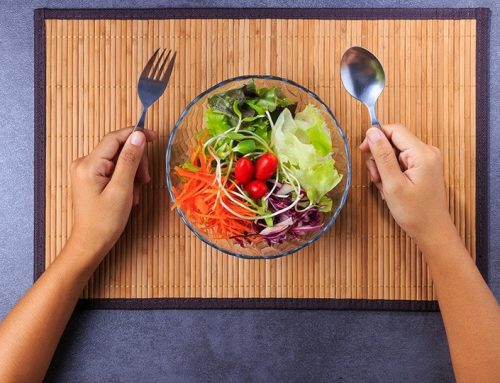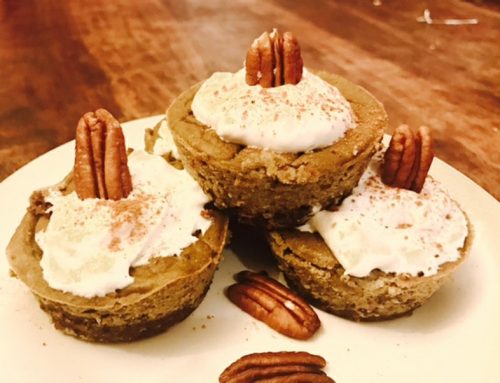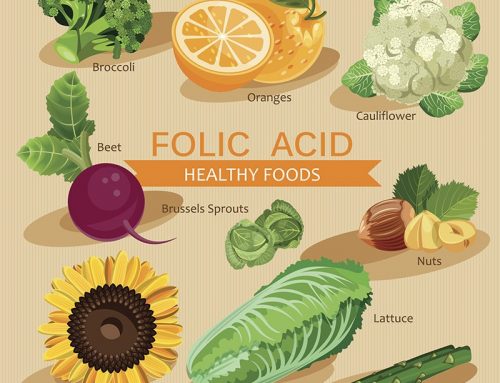It’s almost impossible to talk about diabetes these days without also mentioning its constant companion: obesity.
In fact, the two have become so linked that health practitioners have come up with their own nickname for the pair, a kind of medical version of “Brangelina”-they call it Diabesity.
According to Linda Geiss, a statistician with the Center for Disease Control, obesity is a major factor in the increase in diabetes. And what an increase it is- just in the six year period between 1997 and 2003 there was a 41% increase in the incidence of diagnosed diabetes. Unquestionably, obesity is part of the reason. In 2003, only 2 of 1000 normal-weight people had diabetes, but 18.3 of every 1000 obese people had it. Even being overweight increases risk- 5.5 out of every 1000 overweight people have the disease as well, almost three times as many as those of normal weight.(1)
Should we be worried?
Well, if current trends continue, 1 in 3 Americans will develop diabetes sometime in their lifetime.
And in case you’re wondering, those with diabetes will lose on average 10-15 years of life.
Diabetes is the leading cause of new cases of blindness among adults, not to mention kidney failure and non-traumatic lower-extremity amputations. And as of 2006, it was the 7th leading cause of death in the US-the risk of dying for a person with diabetes is about twice that of a person without the disease. (2)
But here’s the thing: type ll diabetes, which is what we’re mainly talking about here, is virtually 100 percent preventable.
It’s also treatable. And interestingly, the same things that benefit those with diabetes benefit those who are overweight and obese.
To understand why dietary changes can have such a profound impact on diabetes, it helps to understand just what happens in the body when a person with a “normal” metabolism eats food:
- Food is broken down in the digestive system to smaller units that the body can do something with; carbs break down to glucose (sugar), protein breaks down to amino acids (some of which can be turned into sugar), and fat breaks down to fatty acids.
- The glucose (from the carbs and some of the amino acids) gets into the bloodstream, raising your blood sugar.
- In response, the pancreas secretes a hormone called insulin which- among its many jobs- helps escort that extra sugar out of the bloodstream and into the cells (especially the muscle cells) where it can be “burned” for energy.
That’s when everything is going right.
But there’s very little that’s “right” about the typical American diet.
The Standard American Diet is Making Us Fat
We eat far too much sugar, far too many carbs (which, as we’ve seen, turn into sugar) and far too many calories. Couple this with the fact that our sedentary lifestyle creates very little demand among the muscle cells for “fuel” (sugar).
The result?
Many of us have much more sugar floating around our bloodstream than we could possibly use. The pancreas tries desperately to keep up with the increased demand for insulin which is needed to bring blood sugar back down to normal.
Sometimes it works, sometimes it doesn’t. The pancreas might manage to secrete enough insulin to keep blood sugar from being in the “diabetic” range, but the cost is a high level of insulin, which keeps fat from being “burned” (it also raises blood pressure). Your blood sugar may stay just under the cutoff for a diabetes diagnosis, but your high levels of insulin (and the inevitable inability of the cells to “listen” to insulin) classify you as “pre-diabetic”.
In some cases even that extra insulin that the pancreas labored to produce can’t manage to get blood sugar down into the relatively “safe” (or non-diabetic) range. At this point, with elevated insulin and elevated blood sugar- you’ve got full blown type ll diabetes.
Once you understand this, the importance of diet and exercise become very clear. Your diet needs to be one that doesn’t send your blood sugar through the roof. And exercise creates a natural demand from the muscle cells for sugar, therefore helping to reduce blood sugar naturally.
Low-Carb Diets Work for Diabetes… and Weight Loss!
In my opinion, the absolute best strategy for treating (and preventing!) diabetes is a controlled carbohydrate diet. Why? Because of the three “macronutrients” in every diet- protein, carbs and fats– the one that raises blood sugar the most is carbohydrates. Protein raises blood sugar and insulin a bit, but not nearly as much as carbs do. And fat raises it not at all.
That’s why a low-fat high-carb diet is precisely the wrong way to go when you’re dealing with diabetes.
Now this view is controversial (though becoming less so, particularly in view of mounting research showing the positive effect of low-carb diets on blood sugar and insulin). There have been successes with conventional low-fat diets, but they are nearly always loaded with fiber and vegetables (the so-called “low-glycemic” carbs), not with the processed carbs and sugar that are rampant in the conventional American diet. But reducing carbohydrate intake (especially from sugars and starches) virtually always normalizes insulin metabolism, and helps bring blood glucose (sugar) under control.
What is Exactly Constitutes “Low-Carb” These Days?
The following guidelines are adapted from the (sadly) out-of-print masterpiece, “Diabetes: Prevention and Cure” by C. Leigh Broadhurst, PhD. I’ve modernized them slightly, but the essence of her recommendations are hard to improve upon.
- Limit carb consumption to fruits and vegetables.
- Eat no pasta, bread, noodles, macaroni, rice, cereal or crackers.
- Eat absolutely no sugar or sugary foods. “If it’s sugar-sweet or made of wheat, don’t eat”, she says.
- Don’t drink fruit juices, except for a little in blender drinks. Eat the whole fruit.
- Don’t eat meals or snacks composed mainly or wholly of carbs, especially at breakfast and late at night. Meals and snacks need to be a balance of protein, carbs and fat.
- Eat copious quantities of fresh non-starchy vegetables (first choice) and fruits (second choice).
- Don’t drink alcohol. “Alcohol, like refined sugars and starches, forces you to cannibalize your body’s nutrient stores just to metabolize it”.
- Always consume your daily protein requirement. Donald Layman, PhD, one of the premiere researchers in the field of low-carb diets, routinely puts everyone on a diet of 125 grams a day of protein (along with 60 grams of fat and 100 grams or less of carbs, mostly from vegetables and fruits).
- And, of course, start exercising. Every single day.
Remember, a controlled carb diet doesn’t have to be extreme. Most Americans eat over 300 grams of the stuff on a daily basis. You should get huge benefits if you can cut that to 100, though some people may find that they need even greater restriction.
My Recommended Reading List
Some of the best information on diet and diabetes comes from Richard Bernstein, MD, a doc who himself has type l diabetes. His book “The Diabetes Diet” should be required reading.
Also worth reading: “The Atkins Diabetes Revolution” by Mary Vernon, MD.
Diabetes is one of those conditions where you actually can take control of your own health. Do it. As the kids would say, “it’s so worth it”.
Sources
- WebMD, “Diabetes Up, Obesity to Blame”, April 20, 2006
- Centers for Disease Control and Prevention, Diabetes: At A Glance 2009














Hi Jonny …
I wrote you before I left for NYC for 6 months. I’m back in Oregon. Still 63, still down to 180 from 227. It was wierd. I ate 180 restaurant meals in NYC over the six months I lived there. I walked no less tha five miles per day, or almost 1000 miles. I still gained weight. Now that I am back home and on my ‘Johnny diet’ I am back to running 5 miles 3 times per week but being very strictly low carb. I left a review on Amazon for you called (wonderful wonderful wonderful). I am a big ( well not so big anymore) fan. I’m giving a four hour speech about your book in November. Diabetes II is in check. Thank you
Wow, I’m just thrilled to hear this. Kudos to you, and many thanks for the kind words. But all the credit is due to you– I just point the way. It’s you who were brave enough to actually make the journey.
Warmly,
Jb
Jonny, the other two books you recommend put much stricter limits on fruits and vegetables than Broadhurst. Which diet do you advocate? Also, what exercise program would you recommend? I always respect you as being objective and scientific, Jonny.
honestly, i think it all depends. That’s the problem with one-size-fits-all diets, even those written by the “good guys”. You have to individualize for each person.
warmly
jb
Hi Dr. Bowden! I appreciate your articles a great deal, but I dislike this post’s photo: two headless female bodies, being compared, as though one is less desirable than the other. I wish we would move away from comparing, and simply focus on health.
Hey Jonny,
Hope this finds you doing well. I just ran into your blog in doing some diabetes and bio-hacking research, mainly for my own curiosity’s sake. What prompted it was watching a demonstration by a guy named Dave Asprey. He’s called the Bulletproof Exec that supposedly biohacked his life.
Curious to know what your thoughts were? He uses a lot of external neurofeedback techniques like EEG and HEG and grass fed butter in coffee.
No worries if not, just trying to get info together on the effectiveness of these things.
Regards,
Tate
Hi Jonny,
I’ve tried low-carb diets to control my blood sugar in the past but can’t seem to stick with them. I’m so impressed with your Cholesterol Myth book that you wrote with Dr. Sinatra that I’m ordering your book on Living Low-Carb and will try again.
One of the problems I find with all these dietary studies and food recommendations is they measure portions in GRAMS. Being an American, I don’t know what a gram of something looks like! Translating the weights into ounces is a little easier, but most people cook by volume, not weight. I DO know what a tablespoon of something looks like, or 1/4 cup, or a half of an apple. All these studies that say “eating x-number of grams of such-and-such is beneficial” are meaningless for American audiences, and just add another layer of complexity to the already difficult problem of changing how we eat. I wish they would say “eat 2 tablespoons of such-and-such a day” instead.
Just my $0.02. Keep up the good work. You’re a real inspiration!
Proper and balance diet is the only and only solution to prevent from diabetes and if you are avoiding the vegetables and balance diet it means you are inviting this evil disease.
Hi
All your books are on my ebooks. Thanks for tons of info.
Just read Cinnamon capsules have an ingredient that might cause cancer but it isn’t water soluable. Am assuming you would boil cinnamon sticks and drink the liquid, to avoid that ingredient. Given that cinnamon is used to help with lowering blood sugar levels, would cinnamon capsules be safe for folks to take? Would appreciate your opinion on this. Cheers.
actually according to my friend Leigh Broadhurst, PhD, who worked on the original research on this at the USDA, the best cinnamon to use is the regular old cheap stuff from the supermarket. You don’t need any fancy extracts or oils.. plain old cinnamon works fine!
warmly
jb
how to cure diabetes naturally
Nopales Salad ,
Many times you’ve heard that diabetes is a disease that has no cure.
With natural remedies can cure diabetes with a good diet can cure diabetes perfectly without suffering any negative effect on health .
There are plenty of home remedies that will help you fight against this disease , but perhaps the best natural remedy for diabetes is the cactus salad as a cure for diabetes
The nopal is typical of Mexico and has magnificent properties that make it ideal for those suffering from diabetes…
read here: http://how-tocurediabetesnaturally.blogspot.com/
The links no longer work. If you click on one of them like for Chromium you get 404 Not Found. I clicked on a few of the others and got the same thing. I saw a video that you do not like GTF Chromium and was interested in seeing that as so many people think it is so great. It would be nice to see why you think this. I have not tried it myself but was looking into it but had not decided yet.
Thank you, I took the links out.
Great post about diabetes cure very well written
Your tips on diets for diabetes is very informative.Exercise is also indispensable for diabetics.One of the best way to control diabetes is through regular practice of Yoga. Some of the yoga postures keep fit thyroid, adrenal, pancreas glands thus helps to keep the sugar level in normal range.
For more information , you can see http://www.fitnessofbodysoulandmind.com/diabetes-video-course/